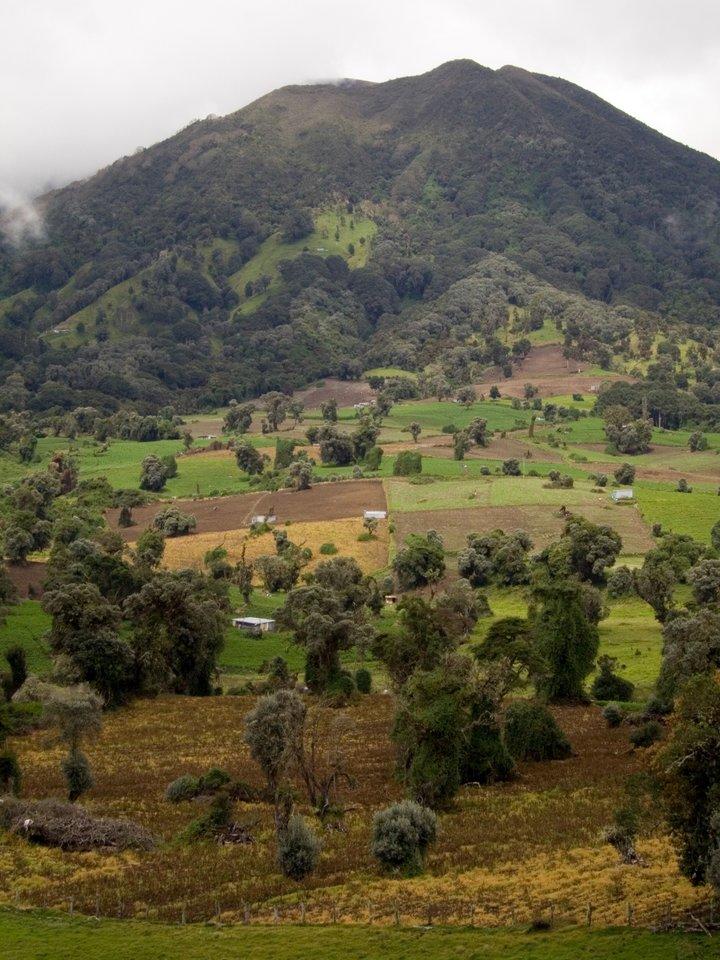From the Field Climate-smart territories — An interview with Jacob van Etten

Bioversity International scientist Jacob van Etten on 'climate-smart territories' and the recent Wallace Conference in Costa Rica.
The recently released report by the Intergovernmental Panel on Climate Change confirms what we already know: the climate is changing, and the need for farmers around the world to adapt to this change is ever more pressing.
To address this critical issue, this year, CATIE’s Inter-American scientific Henry A. Wallace Conference Series was centred around the concept of ‘climate-smart territories’ – socio-geographical spaces where actors collaborate to optimize ecosystem services and agricultural production for the improvement of human well-being in the face of climate change.
We caught up with Bioversity International scientist Jacob van Etten who attended the conference and is part of the team contributing to CATIE’s climate change initiative: MAPNoruega.
Tell us a bit about the conference. What were your impressions?
There was quite a mix of people attending the conference, mostly from the Central America region. What was interesting was that everyone had their own view of ‘territory’. In particular indigenous peoples, who associate ‘territory’ with a sense of belonging and identity, as well as political resistance, such as their conflicts with the construction of hydropower dams in the region. Many participants also felt that ‘territory’ is a bit of a boundary subject. It sits in between disciplines, not really having its own place for people to talk about. A bit like climate change, I guess.
So what do we mean by ‘territory’?
Well, a ‘territory’ is a collection of landscapes. We tend to define landscapes by a biological ecosystem, such as 100,000 hectares of forest. I guess that’s a bit of an intuitive definition, but it’s a more geographical and ecological point of view. Those who talk about a landscapes approach might be referring to ecosystem-based adaptation, integrated landscapes, or a Model Forest. A territorial approach sort of glues all those together. It’s a meeting place to integrate all disciplines, link to multi-stakeholder platforms, work with different sectors to get a more integrated perspective of a territory: water and forest managers, farmers, but also universities and education.
And what was Bioversity International’s role at the conference?
Well, CATIE is currently working on a project known as MAPNoruega, which is trying to implement a ‘climate-smart territories’ approach. Agricultural biodiversity is very much a part of this, and Bioversity is partnering with MAPNoruega to provide scientific input on seeds and diversification, and how that can help smallholder farmers adapt to climate change.
Can you elaborate on this and our work on climate-smart agriculture?
We’re currently working on a methodology on diversification, that is, bringing stakeholders around the table to discuss what species are adapted for that area, what market demands exists, what are the specific vulnerabilities that can be addressed through diversification. This is more effective that just copying something that’s been done in a neighbouring territory.
We’re also looking at bringing genetic diversity to farmers in a more territorial way, through climate-smart seed systems. We identify germplasm and recommend seed varieties based on Geographic Information Systems (GIS) data. We’re also looking at crowdsourcing, to see how farmer participation can generate new data and strengthen seed systems. Seed systems are about connections beyond and between territories, which is the network aspect of territory. When I say ‘territory’, I mean geography plus participation.
Any final thoughts on ‘climate-smart’ agriculture?
Well, agriculture is considered ‘climate-smart’ when it contributes to food security, adaptation and mitigation in a sustainable way. For a lot of people that is simply a collection of practices, such as water management and being strategic about grazing. Bioversity, and CCAFS’s view of climate-smart agriculture refers to a type of agriculture that stays within the limits of our ecological systems, in fact, it should enhance our ecological systems. You should read the paper co-written by one of our colleagues, Fabrice DeClerck which explains this concept in more detail.
Jacob van Etten is the theme leader of Bioversity International’s Adaptation to Climate Change theme. The theme contributes to the CGIAR Research Program on Climate Change, Agriculture and Food Security (CCAFS).
